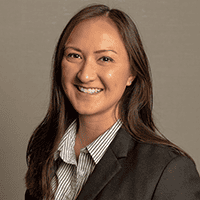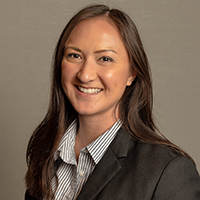Kiah Lau Haslett is the Banking & Fintech Editor for Bank Director. Kiah is responsible for editing web content and works with other members of the editorial team to produce articles featured online and published in the magazine. Her areas of focus include bank accounting policy, operations, strategy, and trends in mergers and acquisitions.

Funding Fears Transform Into Profitability Woes
The impact of higher-cost funding is showing up in bank margins, leading to an increase in unprofitable community banks at the end of 2023.
The focus on managing liquidity risks and a willingness to load up on high-cost funding could portend margin compression for banks, slowly ebbing or eroding revenue.
Controlling the cost of this funding while maintaining adequate liquidity is a priority for banks. Sixty-four percent of directors and bankers rated deposit pricing as the most significant strategic challenge over the next 18 months in Bank Director’s 2024 Risk Survey, conducted in January. Generating revenue came in at 21%. The risk for banks now is controlling the impact of interest expense on their net interest margins, or NIMs.
NIMs fell an average of 10 basis points, to 3.17%, at the end of the first quarter — below the pre-pandemic average of 3.25%, according to the Federal Deposit Insurance Corp.’s quarterly banking profile. All asset size groups experienced a quarterly decline. First quarter net income at community banks was $6.3 billion, a 6.1% increase over last quarter. The FDIC attributed this increase to securities sales and lower noninterest and provision expenses.
“[T]he banking industry still faces significant downside risks from the continued effects of inflation, volatility in market interest rates, and geopolitical uncertainty,” said FDIC Chairman Martin Gruenberg in a press release. “These issues could cause credit quality, earnings, and liquidity challenges for the industry,”
Banks are generally not rewarded for growth when the yield curve — the difference between long-term rates and short-term rates — is inverted, and the cost of adding marginal funds is high, says Mercer Capital Managing Director Jeff Davis. Many institutions may opt to shrink their balance sheets in such an environment, resulting in lower revenues.
“Setting aside deposit costs, it’s hard for me to imagine the industry is going to see a secular improvement in profitability,” Davis says. “There’s not a God-given right to having a high net interest margin.”
While a bank may use wholesale funding in the short term, it should also focus on long-term strategies to deepen relationships that bring in low-cost funding. Unprofitable quarters stemming from insufficient interest income, expensive funding and fixed operating costs will ultimately erode a bank’s capital — even without additional credit costs, says Chris Nichols, director of capital markets at SouthState Bank, a unit of Winter Haven, Florida-based SouthState Corp., which has $45 billion in assets. He says this decline matters if a bank produces below its cost of capital, which is usually around 11% or 12%; those institutions could struggle to raise the additional capital needed to grow or bolster reserves.
“[T]he secret formula in banking hasn’t been followed enough: more profitable products to more profitable customers,” Nichols says. “If banks focused more on engaging their customers and being relevant to them, deposits would naturally flow. Instead, they’re focused on the symptoms rather than the cure.”
Already, there are cracks in some banks’ profitability. The “small but rising” number of unprofitable community banks rose to 5.2% at the end of 2023, up from 3.5% a year prior, according to the FDIC’s 2024 Risk Review. Margin pressure was a major driver of this increase: More than 75% of the community banks that slipped into unprofitability in 2023 reported margin compression during the year. That pressure stemmed from a larger median increase in their cost of funds — up 125 basis points compared to an increase of 96 basis points at profitable community banks — due to their reliance on wholesale funding, the FDIC wrote.
“I think if things don’t change and we stay like this, there’ll be more unprofitable banks in 2024, and there’ll be more in 2025 than in 2024,” Davis says.
He may be right. Almost 2% of profitable banks have NIMs below 2%, up from 0.9% of profitable banks in 2022. The agency said that increase “suggests a widening of weakness in the industry.” A greater reliance on interest-bearing deposits and a higher share of borrowings, compared to other community banks, pushed these institutions’ cost of funds up a median 135 basis points at the end of 2023. On the other side of the balance sheet, their asset yields “trailed” the broader industry. One reason why is that these institutions have a higher median share of longer-term assets — 58.3% of total assets, compared to the median of 49.7% at all other community banks.
That added up to a median return on assets of 0.27%, which the regulator wrote makes this group of banks “more susceptible to earnings challenges should asset quality weaken.”
Nichols doesn’t think it’s too late for community banks to reverse profitability trends, especially if they can bring in low-cost deposits through targeted marketing and outreach.
But cheap funding won’t be enough to fully address longer-term competitive trends and a federal funds rate that far exceeds what banks faced since the financial crisis. Community banks will need to ultimately grow their margins and revenue to win.
“Make the changes today, and banks won’t have this problem a year from now,” Nichols says. “But I think the banking industry is going to continue having this problem two or three years from now. We’re still going to be talking about margins and funding.”



